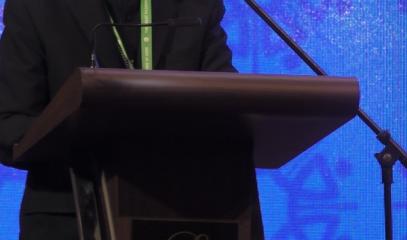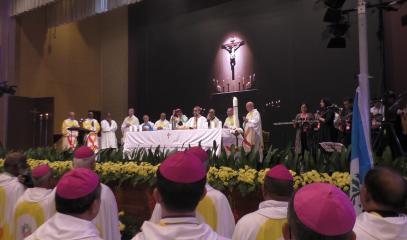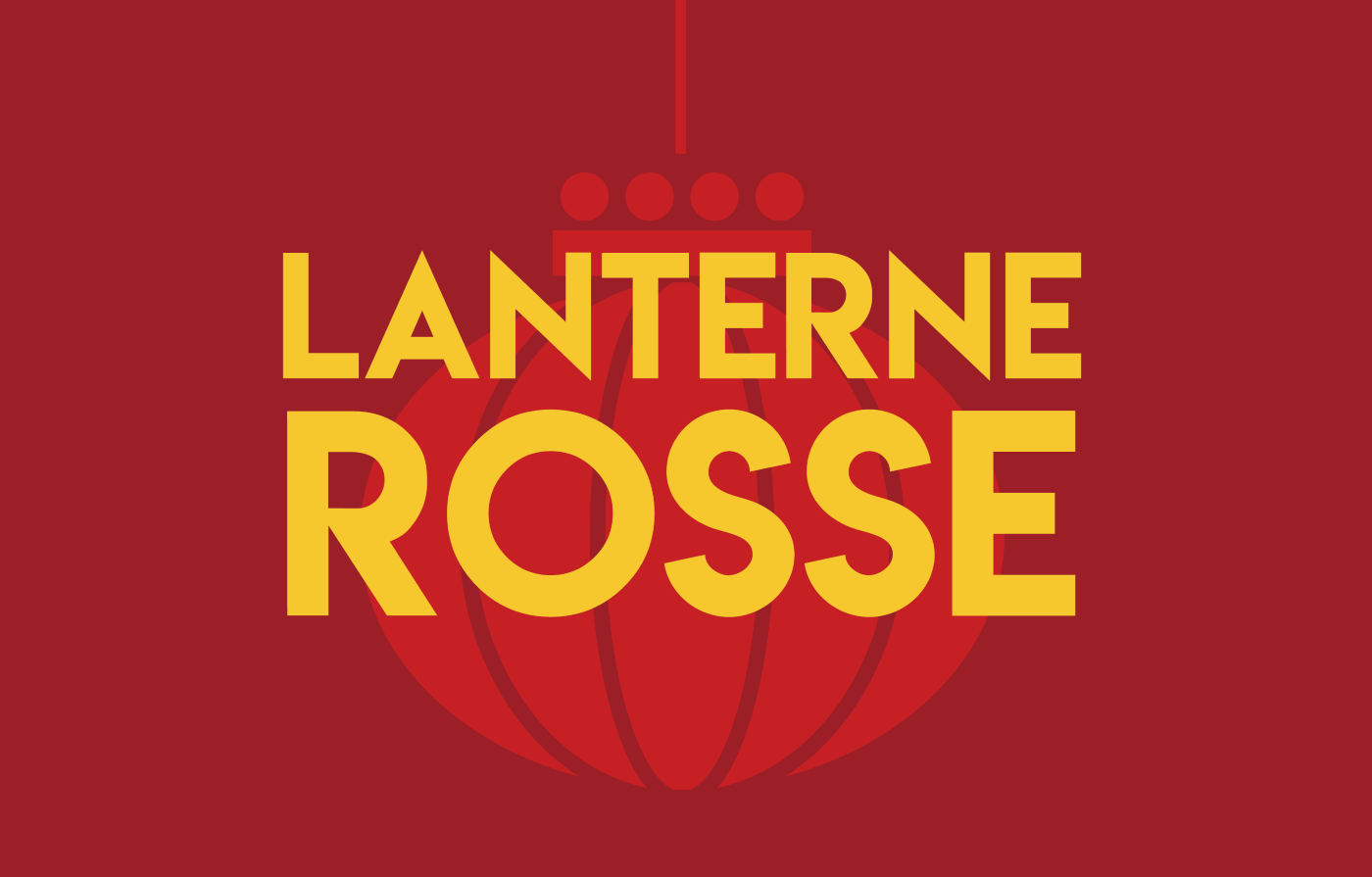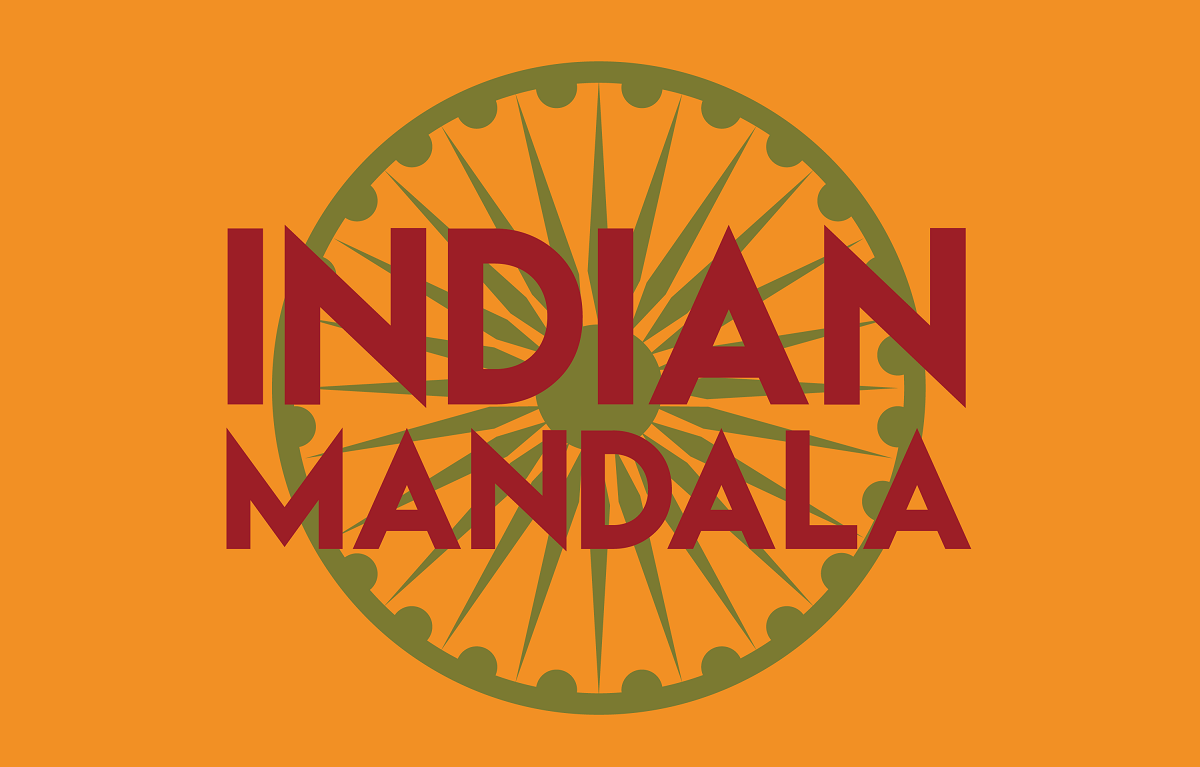In the footsteps of Jesus, alongside everyone for a better Asia
In Penang, 800 delegates from churches across the continent gathered for a ‘pilgrimage of hope’ in the Jubilee year. Cardinal Tagle: like the Magi, we reject the despair of today's Herods. Archbishop Simon Poh of Kuching: ‘We are a minority. But the Lord asks us too not to shut ourselves in our churches, but to serve our brothers and sisters.’
Penang (AsiaNews) - ‘If Jesus returned to Asia today, we would find him waiting for a crowded train in Mumbai or in the traffic of Manila, among migrants and young people shaking their iPhones. He would say to us: “I remember this place, I was born here”. But wouldn't he find us too busy, divided, afraid?’ Cardinal Charles Maung Bo, Archbishop of Yangon, suggested this image to the more than 800 delegates from across the continent gathered since yesterday in Penang, Malaysia, for the Great Pilgrimage of Hope, the second Asian Missionary Conference promoted until Sunday 30 November by the Federation of Asian Bishops' Conferences together with the local archdiocese.
At the 80 tables around which bishops, priests, religious and a large number of lay people from more than 30 countries are gathered, experiences are being exchanged on how this presence - regardless of the size of their communities - is alive in every corner of the continent. There is also discussion about the path proposed by Cardinal Luis Antonio Tagle, pro-prefect of the Dicastery for Evangelisation, in his introductory report yesterday afternoon. Starting from the perspective of the Magi, he drew on the Gospel icon chosen by the Asian Bishops' Conferences in Bangkok in 2022 during the Assembly commemorating the 50th anniversary of the FABC.
The Magi came to Bethlehem from the East and returned to their homeland “by another route.” Their pilgrimage, Cardinal Tagle explained, can only be fully understood when viewed alongside Herod’s journey. The Magi represent those who come from a context considered pagan, guided by a prophecy written on fragile parchment, yet able to read in the star a vision—a goal toward which to walk. In contrast stands a king surrounded by experts in Scripture who, absorbed in themselves, have become blind to signs and deaf to the Word. “It is a pilgrimage of hope, against the despair of those who cling to power and even kill children to keep it,” the Filipino cardinal remarked, linking yesterday’s wounds with those that scar today’s world.
“But it was Jesus who showed the Magi another way,” Tagle emphasized. “He chose a path different from Herod and the kings of this world. The Son of God emptied himself to embrace human freedom. He was a teacher with nowhere to lay his head. He called disciples whom no rabbi would have accepted. He taught truth, yet was the target of lies and false testimony. He was enthroned on a cross, accused of being an impostor. And he continues to live in the hungry, the thirsty, the homeless, the prisoners, the strangers. Jesus walks a different path—yet he is the way, the truth, and the life.”
How, then, can we walk this path in Asia today? This is the question the Churches gathered in Penang are addressing, with a realistic view of their own condition and of a continent that is home to three-fifths of humanity. “Asia is not a museum; it is a place of creativity and hard work,” summarized Archbishop George Palliparampil of Miao, president of the FABC Commission for Evangelisation. “Asia is a global hub for industry and commerce, but it also faces serious challenges: environmental degradation, labor exploitation, geopolitical tensions, and economic disparities. It includes some of the richest and poorest nations in the world.”
This jubilee moment in Penang, Palliparampil added, is an occasion for the Churches to “thank God by showing love and appreciation for our faith and cultures. At the same time, we commit ourselves to respond to the Lord’s call to make the world a better place: to create a social order where everyone has a place, where business is conducted with integrity, land is cultivated to feed people, and medical care heals rather than serves profit. We will respect every religion and celebrate every festival. We will not indulge in superiority, but will foster a genuine spirit of solidarity and equality.”
Significantly, the opening session of the Congress was attended by Malaysia’s Minister of National Unity, Aaron Argo Dagan, who highlighted the pluralistic nature of his country—a nation of 35 million people, comprising over 200 ethnic subgroups and embracing Muslims, Christians, Buddhists, Hindus, Sikhs, and others living together in mutual respect. “This diversity,” he said, “is not just a characteristic of our nation. It is its strength—the source of resilience and creativity.”
Being a minority—just 3% of the continent’s population—is not a limitation but a vocation. If the first Asian Missionary Congress in 2006 focused on “telling the story of Jesus to the peoples of Asia,” today the challenge is to “dream and point out” the path the Gospel offers. This vision sees other religions not as rivals but as “brothers and sisters of other faiths.” Archbishop Simon Poh, president of the Bishops’ Conference of Malaysia, Singapore, and Brunei, stressed this in his address on walking together as peoples of Asia: “We know there are places where the Church faces discrimination and persecution. We are a minority, and we acknowledge this. But we are still baptized and sent to all. The Lord asks us to leave our churches and go into the streets—to leave our comfort zones for the peripheries, to serve him in our brothers and sisters.”










.png)










